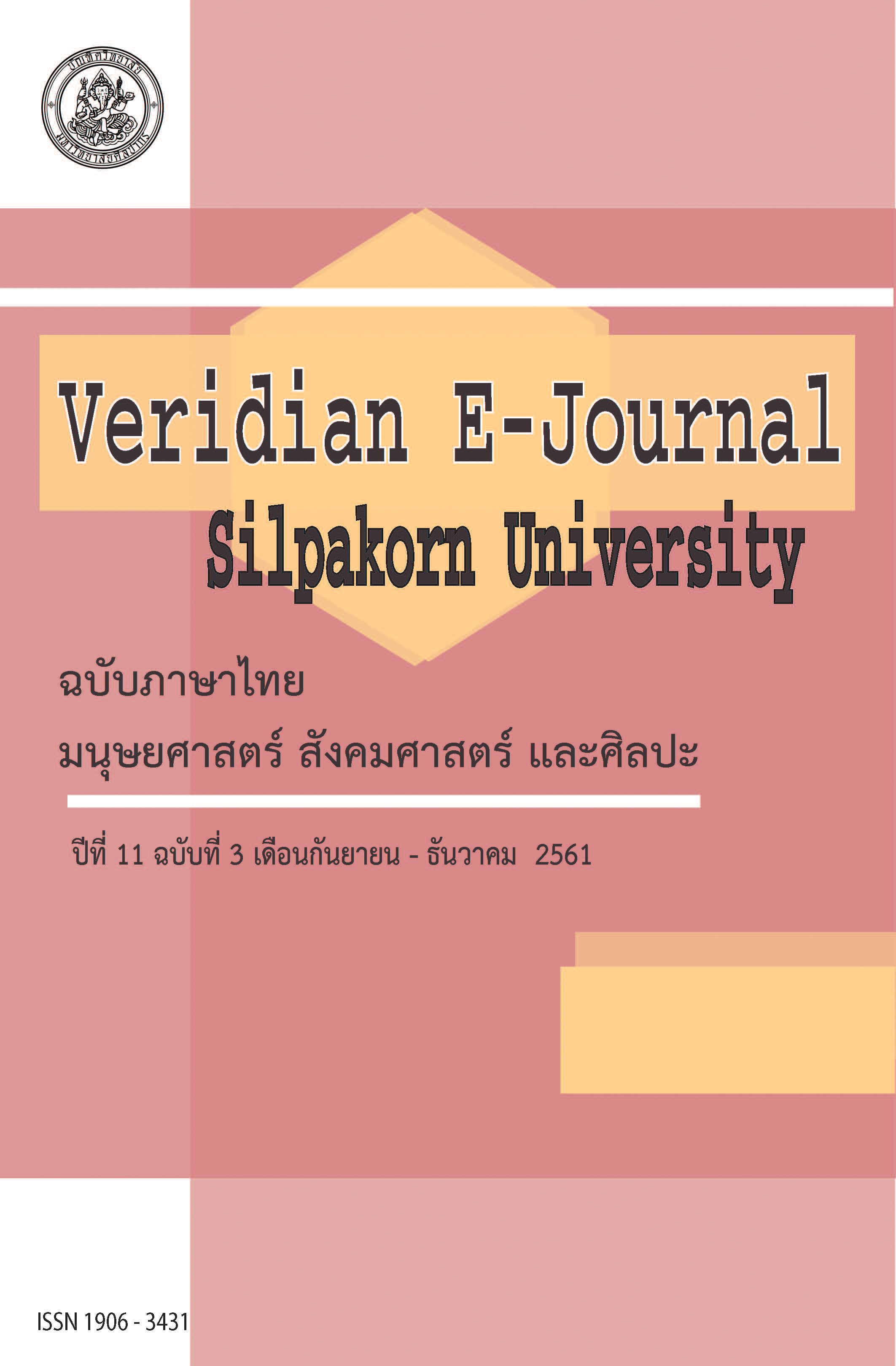ความพยายามลดช่องว่างด้านดิจิทัลในสังคมไทย (Effort to Bridge Digital Divide in Thai Society)
Main Article Content
Abstract
ช่องว่างด้านดิจิทัลเป็นปรากฎการณ์สากลในศตวรรษ 21หลังจากเทคโนโลยีอินเทอร์เน็ต แพร่กระจายเข้าสู่สังคมไทยในปี พ.ศ. 2530 ด้วยอิทธิพลของแนวคิดโครงสร้างพื้นฐานสารสนเทศแห่งชาติ (Nation Information Infrastructure: NII) และทางด่วนสารสนเทศ (Information Superhighway) ของประเทศสหรัฐอเมริกา ผลักดันให้รัฐบาลไทยกำหนดนโยบายให้มีการสร้างเครือข่ายอินเทอร์เน็ตและสนับสนุนให้ภาครัฐ เอกชน และประชาชน นำอินเทอร์เน็ตไปใช้ประโยชน์อย่างต่อเนื่อง
การพัฒนาโครงสร้างพื้นฐานสารสนเทศให้ทั่วถึงและครอบคลุมทั่วประเทศเพื่อให้หน่วยงาน ชุมชน และประชาชนเข้าถึงอย่างเท่าเทียมกันไม่สามารถทำได้ในเวลาอันรวดเร็ว เพราะมีหลายปัจจัยที่เป็นอุปสรรคและเชื่อมโยงกันอย่างซับซ้อน สำหรับประเทศไทยทั้งภาครัฐและเอกชนเลือกลงทุนและพัฒนาการให้บริการอินเทอร์เน็ตจากกรุงเทพมหานครก่อนแล้วจึงขยายออกไปสู่เมืองหรือจังหวัดในแต่ละภูมิภาคที่มีความเจริญในแต่ละภูมิภาคก่อนพื้นที่อื่นๆ เพราะในเขตเมืองประชาชนมีความพร้อมและศักยภาพในการเข้าถึงและนำไปใช้ประโยชน์มากกว่านอกเขตเมือง
นโยบายของรัฐบาลในการสนับสนุนให้มีและใช้อินเทอร์เน็ตทำให้เกิดฝาแฝดเทียมด้านดิจิทัล มีพื้นที่ระดับชุมชนหรือหมู่บ้านจำนวนมากที่เป็นหน่วยย่อยของสังคมและเป็นกลไกที่สำคัญในการพัฒนาประเทศไม่มีช่องทางในการเข้าถึงอินเทอร์เน็ต ทำให้รัฐบาลต้องใช้เวลาประมาณสองทศวรรษจึงสามารถสร้างโครงสร้างพื้นฐานโทรคมนาคมเข้าถึงทุกหมู่บ้านในปี พ.ศ. 2560
อาจกล่าวได้ว่า ความพยายามลดช่องว่างด้านดิจิทัลในสังคมไทยเริ่มประสบความสำเร็จ โดยเฉพาะด้านเทคโนโลยี ทุกชุมชนมีสัญญาณการสื่อสารที่สามารถเชื่อมต่ออินเทอร์เน็ตได้ ต่อจากนี้เป็นต้นไป ปัญหาที่รัฐบาลต้องเข้ามาแก้ไขเพื่อไม่ให้เกิดการลงทุนที่สูญเปล่าคงไม่ใช่เรื่องการสร้างความพร้อมด้านเทคโนโลยีเพื่อทำให้ทุกคนมีโอกาสเข้าถึงอินเทอร์เน็ตเหมือนที่ผ่านมา แต่น่าจะเป็นปัญหาด้านสังคมในระดับปัจเจกชนที่มีความหลากหลายอย่างมาก เช่น ความสามารถซื้อหาเทคโนโลยีอินเทอร์เน็ตมาใช้งาน (affordability) การมีทักษะในการใช้และรู้เท่าทันดิจิทัล (digital literacy) และการมองเห็นถึงความจำเป็นและผลประโยชน์ที่ได้ (dividend) จากการใช้อินเทอร์เน็ต
After the internet technology diffused into Thai society in 1987, the digital divide has become a universal phenomenon in the 21th century. The approaches of the USA National Information Infrastructure (NII) and Information Superhighway influenced the Thai government to formulate policy for developing internet networking and advocating government, private and popular sectors to continuously utilize benefits of internet.
However, developing information infrastructure to cover the country in order to help organizations, communities and people to have access the system cannot be done timely because of several factors that are obstacles and complicated associations. For Thailand, both governmental and private sectors have selectively decided to invest in and develop the internet services first in Bangkok metropolitan before extend the network into other cities and provinces where there are relatively more developed in different regions. One of the reasons is that in such cities and provinces, their people have readiness and potentials in accessibility and utilization of the system more than those who are outside cities.
The government’s policy to provide and support internet services has brought out the digital twins, there are many areas at levels of communities and villages which are sub-units of societies and become significant mechanisms for country development but there are no channel for internet accessibility. The government have to take more or less two decades for establishing communication infrastructure to reach all villages in 2017.
That is, any attempt to reduce the digital divide in Thai society begin to see the light of success, especially, in technological aspect; all communities have communication signal available for connecting with internet. After this, the problem which government will deal with might not be the problem of enhancing technological readiness to help all people access to internet as in the previous situation. Instead, it would be social problems at the individual level which would be various such as affordability, digital literacy and dividend.

